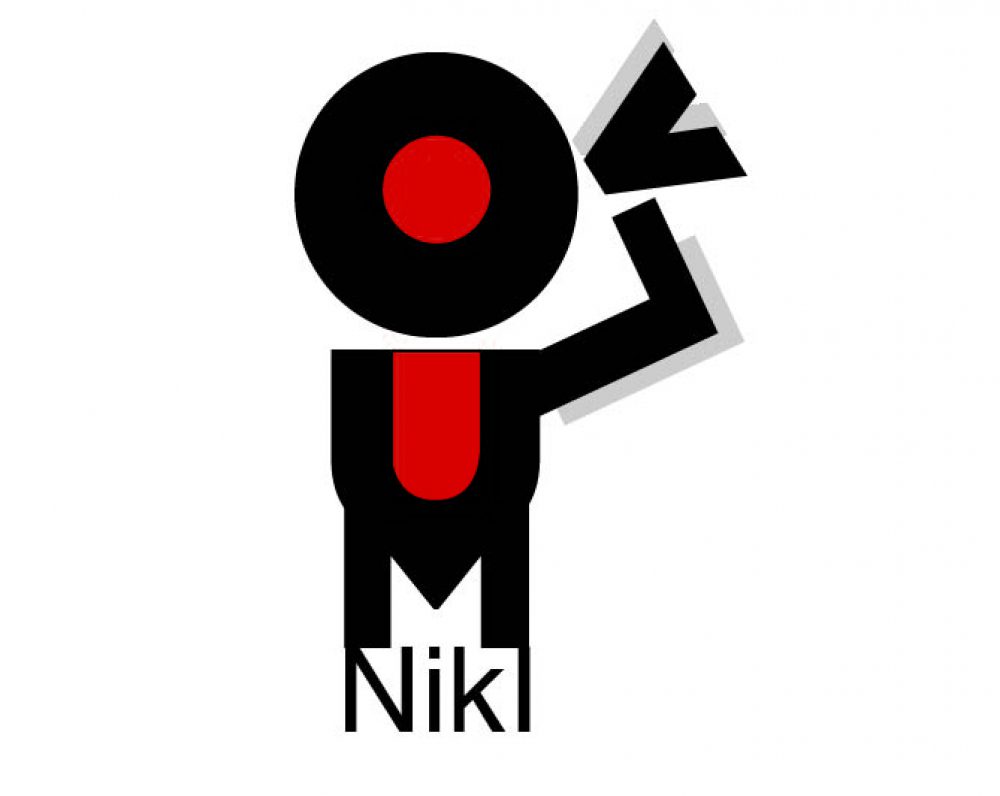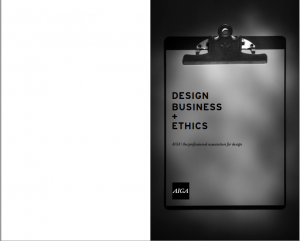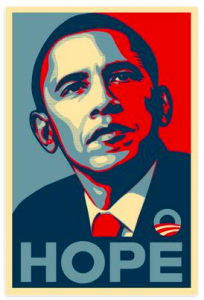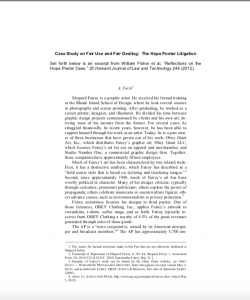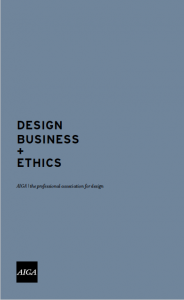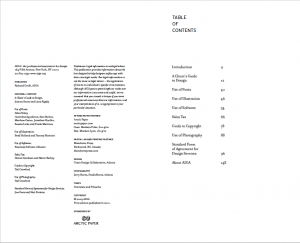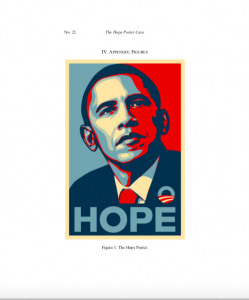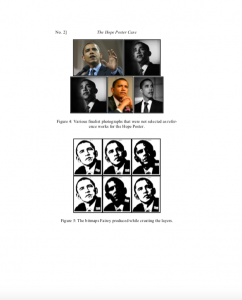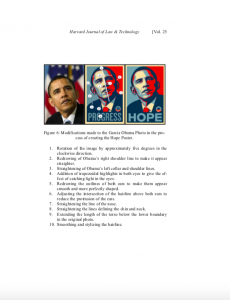This is a response to Shepard Fairey Copyright Case and to the assigned AIFA Design Ethics chapters as they relate to my current internship. First the AIGA Design and Business Ethics is the professional association for design which outlines the critical ethical and professional issues encountered by designers and their clients. So as a designer, we have a responsibility to know and learn those professional ethical standards. In addition, there are four chapters from the AIGA Design and Business Ethics Handbook including the clients guide to design, use of illustrations, copyright, and the use of photography.
After reading the AIGA Design and Business Ethics, I learned a lot and there is a lot of knowledge related to my internship as well. First, we need to be clear what company is the right firm for us, such as their culture, direction, latitude, and etc. In addition, I think most have concrete answers already. For my internship, I found the Institutional Effectiveness Office in Brooklyn College that matched up with my goal very well, and I got comfortable with the honesty of the firms I am talking to. Also as a designer, it’s important for us to clarify what is design and the meaning in design, which it often has the properties of good looks, and it is about the underlying structure of communicating the idea, not merely the surface qualities. In addition, design is about the whole, not the parts, so in order to create great design, we should always communicate with the whole team of our company. During my internship, we did a lot of meetings and I got so many great feedbacks from my partner YanLin, clients, supervisors and other teammates as well which they all were great for me to improve my design to a higher level. So being a professional designer is very important in ensuring that companies communicate effectively.
In addition, as a designer I should know the legal and moral issues for the use of fonts, illustration, software, copyright, photography, etc because they are often overlooked for many designers. First, fonts are creative, intellectual property, similar to designers’ creative work or to proprietary business products, and fonts are so easy to share among computer users, it will easily become a moral problem. For my internship, we needed to use many required fonts such as Arno Pro, Comenia Sans, Caecilia and other fonts from the Brooklyn College brand guidelines. They all needed an Adobe account to login in order to activate them. For me, I already pay my Adobe account every month and I got my license for the font use and softwares as well. For my internship, we always used Indesign, Illustrator, Adobe Acrobat and Microsoft Word as well, and they are all legal. Also, copyright is very important because it defines the ownership of work created by a designer, and it is what allows a designer to control whether or not a work may be copied. From one of our projects “the student experience survey” I used a photo in the background for a poster, and I tried to find the image from the Brooklyn College website in order to get over the copyright issue, that’s why I didn’t find the image online because I know it will become a problem. Finally, it is important to work with professional integrity. Respect for the rights of illustrators is a matter of practice, ethics and law because they invest substantially in the research and development of their technique and style. This in turn, is the basis of their business and reputation. So to ask a designer to mimic the style of another desigers is not considered ethical or, in some instances, even legal.
The Shepard Fairey Copyright Case: The AP image Used in the “Hope” Poster during the 2008 Presidential Campaign is a great example to show us about those issues in the design industry. The AP is a “news cooperative, owned by its American newspaper and broadcast members.”and it has about 3700 employees. In addition, Mannie Garcia is a professional photojournalist who was working for the AP in April 2006, and he is the one who took the “Garcia Obama” photograph. Later, Shepard Fairey used his photo to create the “Hope” poster during the 2008 presidential campaign. In addition, Fairey failed to give appropriate credit to the photographer. Additionally, AP thinks it was Fairey’s commercial motivation and he had earned large amounts of money from the poster. AP claimed by the Associated Press for compensation for the copyright, so based on the response Fairey sued for a declaratory judgment that his poster was a fair use of the original photograph. But AP said Fairey had falsely asserted that he had employed the Garcia Clooney photo, rather than the Garcia Obama photo, as his reference work, and had fabricated evidence in support of that assertion. As a result, the principal parties settled the dispute in mid-January of 2011. Finally, this is a great example to show us, as a designer we all should learn about the legal and moral issues in the design industry in order to make sure we are not making the same mistake and violate our law, and I always tried to avoid those issues during my internship.
